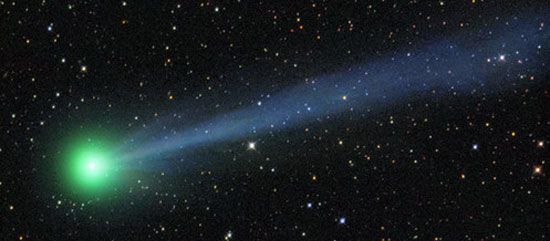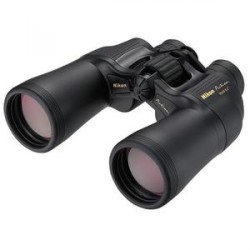Comet Binoculars – Choosing the Best Binoculars to view Comets with

Even though there is still quite a while to go before either Comet PANSTARRS or Comet Ison makes it to our inner solar system, the anticipation and excitement is already running quite high and I was recently asked this question from a reader:
 Question:
Question:
With the ISON in the sky this fall and Comet PANSTARRS possibly visible to eye in March 2013, I would like to get get ready so that I can get a great view when they are here. There seems to be a lot of marketing hype around binoculars for comets and so I am finding it hard to know what exactly I need and what in general should I be looking for in a good pair of binoculars to view comets with?
Binoculars for PANSTARRS and ISON Comets
First discovered using a 0.4 metre telescope by Vitali Nevski and Artyom Novichonok on the 21st September 2012, Ison is as big as a mountain and should be visible in our skies towards the end of the year in November and December.
I have read stories on the web of how the ISON comet could become brighter than the full moon and some even using the term “comet of the century”. If this is true, it will even be visible during the day.
However before then, a second comet might become visible to the unaided eye when it is closest to the sun. Discovered in Hawaii in June 2011 by users of the Pan-STARRS telescope, the C/2011 L4 or PANSTARRS comet was at first only observable though some of the biggest telescopes.
But by the middle of 2012 many amateur astronomers began reporting that they had seen it through their telescopes and by October 2012, the coma surrounding PANSTARRS was seen to be large and estimated at about 120,000km (75,000 miles) wide. Therefore there are now hopes that in March 2013, the PANSTARRS comet could get as bright as Venus.
So for a moment, lets assume that PANSTARRS does get as bright as Venus and/or the ISON does turn out to be the comet of the century or failing that, even if they are just one of the “big ones”, they will still have tails that are tens of degrees long. This means you will be able to see them with the unaided eye and so in these circumstances even a low powered binocular designed for terrestrial use with it’s relatively small objective lenses would be useful.
Comet Binoculars in General
However before we get too excited there are many astronomers who are saying that it is much too soon to be making such extravagant predictions. This is because although a comet’s movement in the sky can be predicted, its brightness cannot.
So for example by the end of November 2013, ISON’s orbit will take it to a distance of about two million kilometers of the sun.
This may sound far, but in space this is actually extremely close and to put this into perspective, Mercury, which as you know is the closest planet to the sun in our solar system never gets closer to the sun than 46 million kilometers but the temperature on it’s surface gets to a staggering 427°C, which is hot enough to melt lead. So as you can see, a comet that is made mostly of ice (if it is) will not last very long, quickly turning into gas as it gets closer to the sun.
So for now let’s assume that like the vast majority of comets viewed from earth, both PANSTARRS and ISON seem fairly small in size (from earth) and thus probably of the order of the larger/largest deep-sky objects.
Initially and when the comet is still quite faint a telescope maybe a better choice. But as/if the tail lengthens and the comet gets brighter, a pair of binoculars work really well and remember that binoculars are ideal for all round astro use and not specifically for comets. A good set of bins that you can hold in your hands is something that every amateur astronomer should have as they are very helpful in learning the sky and pointing a telescope.
Thus the largest binocular that you can afford but still hold still will in many cases be the best binoculars for viewing comets with:
Hand Held 10x50 Binoculars for Astronomy & Comets
As you would for most other deep-sky observation, a good, all round astronomy binocular that is possible to use without a tripod would be something like a 10x50.
 The 10x50 configuration gives you a good balance between cost, a decent amount of detail and penetration, but still with a reasonably wide field of view (FOV) of at least 6.5°. They also still have a reasonably large exit pupil of 5mm which assuming that they use good quality glass, prisms and coatings, should still provide you with a bright enough image for use in most situations.
The 10x50 configuration gives you a good balance between cost, a decent amount of detail and penetration, but still with a reasonably wide field of view (FOV) of at least 6.5°. They also still have a reasonably large exit pupil of 5mm which assuming that they use good quality glass, prisms and coatings, should still provide you with a bright enough image for use in most situations.
Also worth keeping in mind is that at this size and weight, most people (but not all) should be able to hand hold the binocular and keep it still enough to maintain a steady view. The added benefit of hand holding vs a tripod setup is that it is not that practical for viewing positions with a tripod at, or close to being directly above you.
Image Stabilization
If you are concerned that you may not be able to keep the image steady in your hands and don’t want to use a tripod, you could consider getting something like the excellent Canon 10x30 IS. These canon image stabilizing binoculars do cost more, but they do keep the image almost completely still.
A good quality 10x50 with a wide FOV is still pretty good for scanning the sky searching for objects that you may not be sure of and with them you can view clusters and other brighter galaxies. For example you can view the Andromeda Galaxy (M31) and M33 with a 10x50, even from a light polluted area.
What makes something like a 10x50 even more appealing is they also make great daytime, terrestrial binoculars and so you can get a lot of use out of them.
7x50 Binoculars?
Something I would like to mention here is that many people recommend getting a lower powered 50mm binocular for astronomy, something like 8x or even 7x. This has the effect of making the image easier to keep steady when hand held, widening your field of view to make scanning the sky that bit easier and they will also produce a larger exit pupil (a 7x50 has an exit pupil over 7mm) which thus have the potential of letting more light into your eyes so that you see a brighter image…sometimes! For more on the exit pupil and image brightness read my Complete Guide to the Exit Pupil or read the section on the Exit Pupil on my guide to Astronomical Binoculars.
But for my money and for viewing comets, I think the increased detail you get from a higher power like 10x, which I can still keep steady in my hands outweighs the benefits of a potentially slighter brighter image and a slightly wider FOV.
Which 10x50 Binoculars for Astronomy & Comets?
I know that a lot of people recommend binoculars like the Bushnell 10x50 Legacy, Pentax 10x50 XCF, Celestron UpClose 10x50 or the Nikon Action 10x50 binoculars as being the perfect lower cost solution to hand held astro binoculars.
All these are available for under $100 (£80) and yet they produce an image that good quality and bright enough to please most general users.
Giant Binoculars for Astronomy
However if you can afford them and if you want a more detailed but still bright view, bins with higher magnifications but with 70, 80 or even 100mm objectives will perform better in most areas.
But remember as well as the increased cost the other main downside to these giant binoculars for astronomy is their increased weight and size, which makes mounting them on a sturdy tripod or some other way to support them essential.
Which Giant Binoculars for Astronomy & Comets?
 Here I recommend binoculars like the very popular Celestron Skymaster series, with the Celestron Echelon 20x70 Binoculars probably being the most popular general use model and which won my award as the Best Low Cost Astronomy/Long Distance Binocular in 2014.
Here I recommend binoculars like the very popular Celestron Skymaster series, with the Celestron Echelon 20x70 Binoculars probably being the most popular general use model and which won my award as the Best Low Cost Astronomy/Long Distance Binocular in 2014.
But you could also consider the SkyMaster 15x70 , Skymaster 20x80 or even the Skymaster 25x100 Binoculars.
You could also consider the Zhumell Tachyon 25x100 Binoculars that won Binoculars.com’s Best Astronomy Binocular award in 2010 and 2011
For those who want the very best, take a look at the Fujinon 16x70 FMT-SX binoculars which are one of, if not THE most highly regarded astronomy binoculars available… at any price (approx. $685 / £1200).
Which Tripod for Astronomy & Comets?
If you do decide on a giant binocular, your next question will be which tripod. I have not used all out there, but read my review of the Vanguard Alta Pro 263AT Tripod to see why I highly recommend it.
More Information
 Can I help?
Can I help?
Do you have a similar astronomy binocular question or indeed any question related to binoculars or optics that I have not already covered on BBR, then I would love to try and answer it for you:
Ask Me Here

 Article | Posted by Best Binocular Reviews
Article | Posted by Best Binocular Reviews 


 Categories:
Categories:  Tags:
Tags: 
